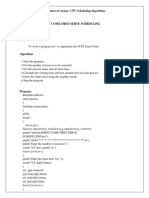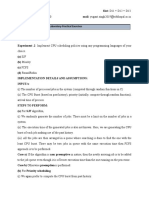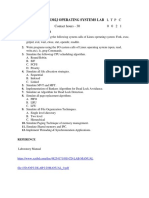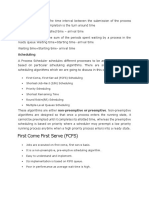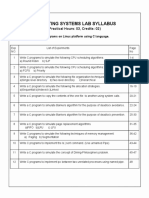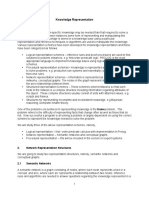0% found this document useful (0 votes)
35 views36 pagesOS LAB Task 1
The document describes the syllabus for an Operating Systems and Scientific Computing Lab course. It outlines the course outcomes, which include simulating CPU scheduling algorithms, file organization techniques, and implementing mathematical functions in Scilab. It then provides details of the tasks to be completed in two parts - the first focusing on operating systems concepts and the second on Scilab programming. Key concepts like CPU scheduling, file allocation strategies, and page replacement algorithms will be simulated along with functions in Scilab.
Uploaded by
maxproooooo9Copyright
© © All Rights Reserved
We take content rights seriously. If you suspect this is your content, claim it here.
Available Formats
Download as PPTX, PDF, TXT or read online on Scribd
0% found this document useful (0 votes)
35 views36 pagesOS LAB Task 1
The document describes the syllabus for an Operating Systems and Scientific Computing Lab course. It outlines the course outcomes, which include simulating CPU scheduling algorithms, file organization techniques, and implementing mathematical functions in Scilab. It then provides details of the tasks to be completed in two parts - the first focusing on operating systems concepts and the second on Scilab programming. Key concepts like CPU scheduling, file allocation strategies, and page replacement algorithms will be simulated along with functions in Scilab.
Uploaded by
maxproooooo9Copyright
© © All Rights Reserved
We take content rights seriously. If you suspect this is your content, claim it here.
Available Formats
Download as PPTX, PDF, TXT or read online on Scribd
/ 36
You might also like
- No ratings yetRaj Os Lab Manualjkkkkkkkkkkkkkkkkkkkkkkkkkkkkkkkkkkkkkkkkkkkkkkkkkkkkkkkkkkkkkkkkkkkkkkkkkkkkkkkkkkkkkkkkkkkkkkkkkkkkkkkkkkkkkgggggggggggggggggggggggggggggggggggggggggggggggggggggggggggggggggggggggggggggggggggggggggggggggggggggggggggggggggggggggggggggggggggggggggggggggggggggggggggggggggggggggggggggggggggggggggggg11321F005511321F005511321F005511321F005511321F005511321F005511321F005511321F005511321F005511321F005511321F005511321F005511321F005511321F005511321F005511321F005511321F005511321F005511321F005511321F005511321F005511321F005511321F005511321F005511321F005511321F005511321F005511321F005511321F005511321F005511321F005511321F005511321F005511321F005511321F005511321F005511321F005511321F005511321F005511321F005511321F005511321F005511321F005511321F005511321F005511321F005511321F005511321F005511321F005511321F005511321F005511321F005511321F005511321F005511321F005511321F005511321F005511321F005511321F005511321F005511321F005511321F005511321F005511321F005511321F005511321F005511321F005511321F00551132116 pages





